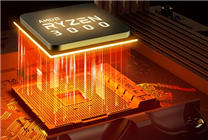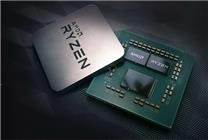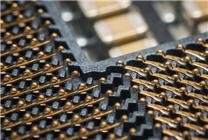AMD Breaks New Ground with X3D CPUs: Achieving 1000 FPS in Top Esports Titles
Summary:
- AMD’s latest X3D CPUs, the Ryzen 9 9950X3D and Ryzen 7 9800X3D, join the prestigious "Thousand Frame Club."
- Six popular esports games hit 1000 FPS at 1080p, highlighting the power of AMD’s technology.
- Achieving these frame rates requires NVIDIA’s RTX 5080 or 5090D graphics cards, emphasizing the need for high-performance hardware.
AMD recently showcased groundbreaking advancements in gaming performance during their "Thousand Frames Esports Legend Day" event in Wuhan. The tech giant revealed that their new Ryzen 9 9950X3D and Ryzen 7 9800X3D CPUs can achieve unprecedented gaming frame rates, breaking the 1000 FPS barrier in several competitive esports titles when paired with the appropriate graphics hardware.
Unveiling the Power of X3D CPUs
At the core of this achievement are AMD’s Ryzen 9 9950X3D and Ryzen 7 9800X3D processors, both of which have officially joined AMD’s "Thousand Frame Club." This esteemed group signifies CPUs that can push gaming performance to new heights, particularly at a resolution of 1080p.
High-Performance Titles Supported
In their recent presentation, AMD confirmed that six high-profile games can reach these remarkable frame rates, which include:
- Counter-Strike 2
- League of Legends
- Valorant
- PlayerUnknown’s Battlegrounds
- Outsider Crazy
- Marvel Contest
This lineup showcases AMD’s commitment to enhancing the gaming experience, particularly within the highly competitive esports realm.
Hardware Requirements for 1000 FPS
To achieve the lofty goal of 1000 FPS in these games, AMD outlined specific hardware combinations required for optimal performance. Notably, the only GPUs capable of reaching this performance threshold in all six games are NVIDIA’s RTX 5080 and the China-exclusive RTX 5090D (the RTX 5090 Lite Edition). These graphics cards, when paired with the Ryzen 7 9800X3D or Ryzen 9 9950X3D, can unlock this ultimate level of gaming performance.
AMD’s own RX 9070 XT, however, only managed to hit 1000 FPS in Valorant and League of Legends, indicating a disparity that raised some eyebrows within the tech community. This situation, which can be described as "strong CPU but weak GPU," reflects the ongoing challenges in balancing hardware performance across different platforms.
The Impact on Gaming Displays
Despite achieving these impressive frame rates, it’s essential to note that mass production of 1000Hz displays is not yet a reality. Thus, AMD’s recent display of power is more of a showcase of potential rather than immediate practicality. As gaming technology continues to advance, discussions around higher refresh rates in displays are likely to intensify, paralleling developments in CPU and GPU capabilities.
Conclusion
The launch of AMD’s Ryzen 9 9950X3D and Ryzen 7 9800X3D CPUs marks a significant milestone in the gaming industry, providing gamers and enthusiasts alike with tools to achieve stunning performance in their favorite esports titles. While the requirements for such high frame rates necessitate powerful companion graphics cards like the RTX 5080 or 5090D, the future of gaming looks promising as technologies continue to evolve.
As gamers continue to seek ways to enhance their competitive edge, AMD’s innovative solutions highlight the critical interplay between CPUs and GPUs in achieving optimal performance. This trend will undoubtedly shape the landscape of high-performance gaming, pushing boundaries that redefine what gamers can expect from their hardware.
Stay tuned for more updates as AMD continues to lead the charge in redefining gaming performance standards.
Optimizing Gaming Experience: As the gaming industry progresses, adopting cutting-edge technology will be crucial for competitive gamers aiming for the highest performance metrics. The advancements made by AMD with their X3D CPUs signify a pivotal movement toward achieving excellence in esports experiences.








